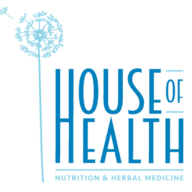
Bone Medication
FOSAMAX®
alendronate sodium
From: http://www.medsafe.govt.nz/profs/Datasheet/f/Fosamaxtab.htm
FOSAMAX, like other bisphosphonates, may cause local irritation of the upper gastrointestinal mucosa.
Oesophageal adverse experiences, such as oesophagitis, oesophageal ulcers and oesophageal erosions, rarely followed by oesophageal stricture or perforation have been reported in patients receiving treatment with FOSAMAX. In some cases these have been severe and required hospitalisation. Physicians should therefore be alert to any signs or symptoms signalling a possible oesophageal reaction and patients should be instructed to discontinue FOSAMAX and seek medical attention if they develop dysphagia, odynophagia, retrosternal pain or new or worsening heartburn.
The risk of severe oesophageal adverse experiences appears to be greater in patients who lie down after taking FOSAMAX and/or who fail to swallow it with a full glass of water, and/or who continue to take FOSAMAX after developing symptoms suggestive of oesophageal irritation. Therefore, it is very important that the full dosing instructions are provided to, and understood by, the patient (see Dosage and Administration).
Fosamax is not recommended for people with impaired kidney function, for pregnant or breastfeeding women.
Other adverse reactions have been reported:
- Body as a Whole: hypersensitivity reactions including urticaria and rarely, angioedema. As with other bisphosphonates, transient symptoms as in an acute-phase response (myalgia, malaise, asthenia and rarely, fever) have been reported with FOSAMAX, typically in association with initiation of treatment. Rarely, symptomatic hypocalcaemia has occurred, generally in association with predisposing conditions. Rarely, peripheral oedema.
- Gastrointestinal: nausea, vomiting, oesophagitis, oesophageal erosions, oesophageal ulcers, rarely oesophageal stricture or perforation, and oropharyngeal ulceration; rarely gastric or duodenal ulcers, some severe and with complications (see Warnings and Precautions, and Dosage and Administration). Localised osteonecrosis of the jaw, generally associated with tooth extraction and/or local infection (including osteomyelitis), with delayed healing has been reported rarely (see Warnings and Precautions).
- Musculoskeletal: bone, joint, and/or muscle pain, rarely severe and/or incapacitating (see Warnings and Precautions); joint swelling; low-energy femoral shaft fracture (see Warnings and Precautions).
- Nervous System: dizziness, vertigo, dysgeusia.
- Skin: rash (occasionally with photosensitivity), pruritus, alopecia, rarely severe skin reactions, including Stevens-Johnson syndrome and toxic epidermal necrolysis.
- Special Senses: rarely uveitis, scleritis or episcleritis.
At House of Health, we recommend assessing your Osteoporosis markers and undertaking a rigorous remineralisation regime to monitor and improve your bone health. Contact us here











